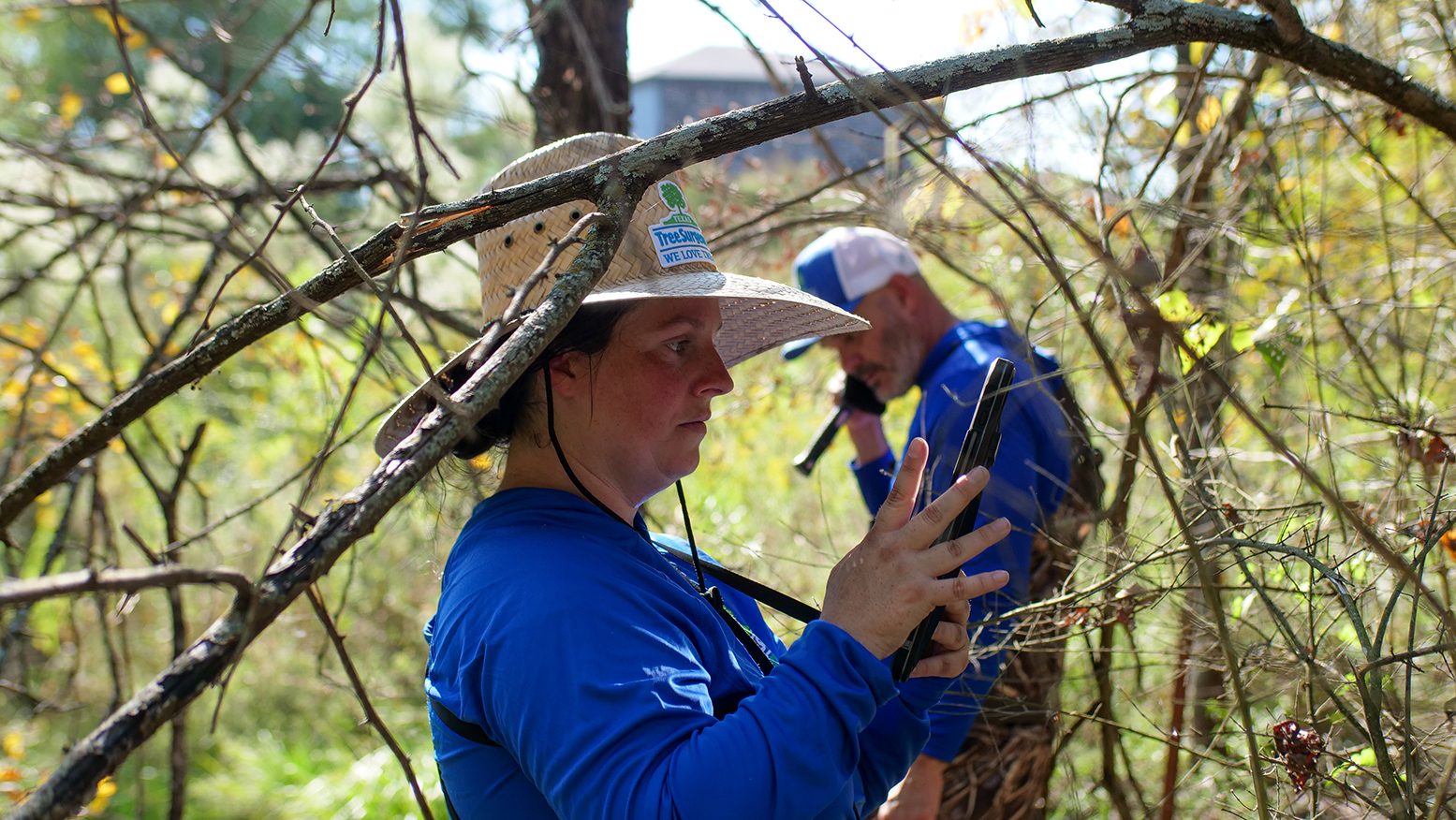How Does an Arborist Know What’s Wrong With My Sick Tree?

For all the different health issues that can affect trees, there are a small number of outward symptoms. Browning, limb drop, leaf spotting, and bark loss, for example, could be signs of many different problems, some of which require immediate attention, and some of which will resolve on their own. Being able to properly assess a tree is key to providing the best care to keep the tree healthy. Luckily, “tree doctors” and their colleagues are equipped with a variety of tools to evaluate, diagnose, and care for a wide range of tree health issues.
Inspection, Evaluation, and History
While many symptoms of tree health issues are obvious, it takes education and experience to be able to understand what a tree’s symptoms mean, make a proper diagnosis, and arrange for the best treatment. ISA Certified Arborists are specially-trained individuals who care for trees. Certified arborists understand the different factors that contribute to the health of a tree, such as:
- Tree species and variety
- Different species of tree are more susceptible to different health issues
- What is normal to see in one tree might be a serious concern in another
- Standard growth patterns and seasonal changes vary by species
- Many pests target one species or group of species only
- Imported species have different needs than native ones
- Different species of tree are more susceptible to different health issues
- Location specifics
- Soil type, sun exposure, proximity to other plants or buildings
- Weather patterns in the area
- Weather events many years in the past can have ongoing effects on trees
- Environmental contaminants
- Chemical exposure, herbicides (such as weed ‘n’ feed), airborne pollutants
- History
- Over- or under-watering, herbicide use, nearby construction
- Structural abnormalities
- Multiple trunks
- Burls
- Wounds (old or new)
- Broken limbs
- Previous trimming or damage
- Evidence of insect or animal activity (woodpecker holes, borer holes)
- Leaf and canopy characteristics
- Individual leaves
- Size, color, thickness
- Presence of spots/growths
- Canopy in general
- Density, color, uniformity
- Locations of new leaf growth
- Evidence of animal activity (squirrel or bird nests)
- Individual leaves
- Trunk, branch, and twig growth
- Location and size of recent growth
- Presence/absence of watersprouts/suckers
- Browning or dieback near tips
- Root collar (root flare) issues
- Deep or shallow planting
- Fungus activity
- Sucker growth
- Surface roots
- Girdling roots
It is important to always hire a local certified arborist. Familiarity with native and imported species and local climate history is key to understanding what is abnormal in a particular tree. Weather events, like the freeze in February 2021, can have lasting effects, and a local arborist is your best resource to understand how the freezing weather affected different types of trees. Furthermore, there may be particular diseases or pests in your area that warrant special attention. For example, the epidemic of oak wilt in Texas has led to the creation of the Texas Oak WIlt Qualification (TOWQ), administered by the Texas Chapter of the ISA. Certified arborists with this credential have received special training in identifying and managing oak wilt. If there is oak wilt in your area, you should contact a TOWQ arborist to make sure that your oaks are properly cared for.
At Texas Tree Surgeons, we love trees and we love our community! We are proud to be DFW-born and bred, and we pride ourselves on continuing education to remain at the forefront of our field. We employ TRAQ and TOWQ ISA Certified Arborists and ISA Board Certified Master Arborists. All of our trimming is performed to the highest industry standards and we offer comprehensive plant health care programs to treat pests and diseases on plants of all types. We provide soil and plant tissue sample submission services, as well as advice on how to prepare and submit samples yourself. We are in regular communication with researchers in plant biology, horticulture, entomology, and related fields, so we are equipped to diagnose any plant health issue, common or rare. Have a question about the health of your trees or about how our certified arborists work? Let us know!
Related Blogs
Similar blogs related to this topic


Top 10 Things We'd Tell You as an Arborist if We Weren't Afraid of Hurting Your Feelings
This is a list of tree care worst practices that you, or someone you know may be guilty of. Read the following list at your own risk. You’ve been warned, feelings may get hurt. 1.…
Read more

Avoid These Tree Care Mistakes for a Healthy Landscape
Below is a list of overlooked mistakes that could jeopardize the health of your trees. From missteps in pruning to incorrect watering practices, discover how to give your trees the care they deserve. Red oak…
Read more

Why do Arborists Recommend Soil Sampling in Urban Areas like Dallas?
Soil sampling is a crucial practice in urban areas like Dallas. It helps arborists make informed decisions about your landscape to ensure a healthy urban ecosystem. Our native soils vary widely—from the dense clays of…
Read more
